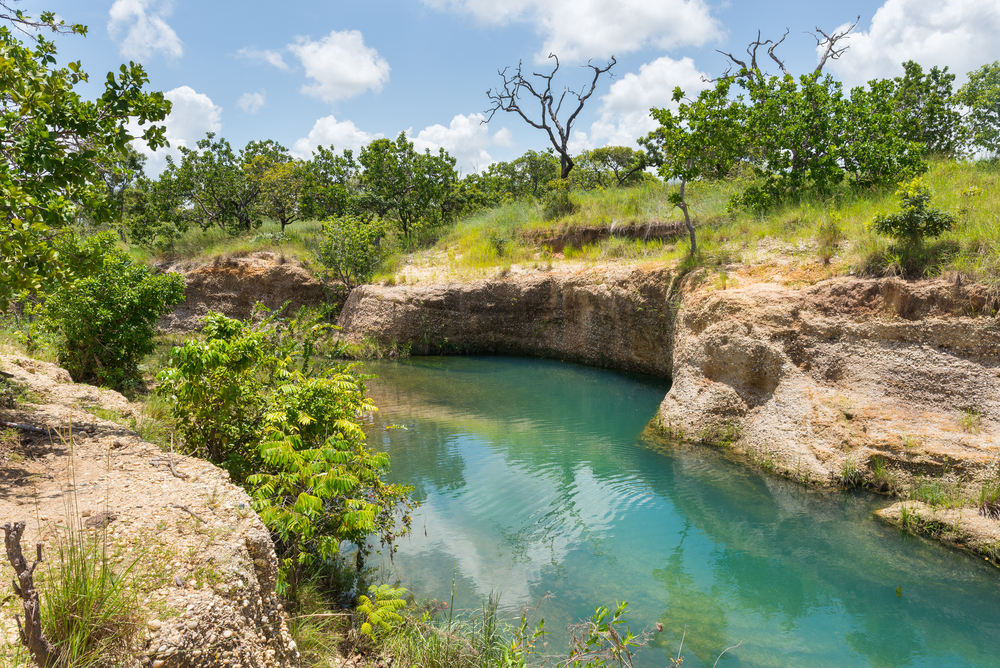San Esteban Overview
San Esteban National Park, or Parque Nacional San Esteban, is located in northern Venezuela within the states of Carabobo and Aragua.
Covering an area of approximately 445 square miles (1,153 square kilometers), the park is part of the Cordillera de la Costa mountain range and is known for its lush landscapes, diverse ecosystems, and historical significance. It serves as an extension of Henri Pittier National Park and plays a crucial role in preserving Venezuela’s unique flora and fauna.
The park’s terrain is characterized by rugged mountains, deep valleys, and dense forests that transition between tropical and cloud forests. Some of its most prominent geographical features include Cerro El Café, a notable mountain peak, and the Urama River, which carves through the landscape, providing essential water sources for the region.
The vegetation varies significantly depending on altitude, with coastal dry forests at lower elevations giving way to humid cloud forests higher up. The park’s forests are home to towering trees such as mahogany, cedar, and fig species, while epiphytes like bromeliads and orchids thrive in the misty upper layers of the canopy.
San Esteban National Park is a haven for wildlife, supporting a remarkable diversity of species. Among its most iconic mammals are the jaguar, ocelot, and howler monkey, all of which rely on the park’s protected habitats to survive. Other notable species include the capybara, collared peccary, and two-toed sloth.
Bird enthusiasts will find the park particularly rewarding, as it is home to an array of avian species, including the strikingly colorful toucans, the Venezuelan trogon, and the elusive harpy eagle. The park’s rivers and wetlands also support amphibians such as poison dart frogs and a variety of freshwater fish.
A popular feature of the park is the historic Camino de los Españoles, an old Spanish colonial road that once connected the city of Puerto Cabello to the interior of Venezuela. This pathway, still partially intact, offers a glimpse into the country’s colonial past and serves as a major attraction for history and hiking enthusiasts.
Another significant site is the indigenous petroglyphs found in some remote areas of the park, providing insight into the region’s pre-Columbian cultures. Visitors can also explore the hot springs of Trincheras, a natural geothermal site known for its therapeutic properties.
Visitors to San Esteban National Park can experience its landscapes through a variety of outdoor activities. Hiking is one of the best ways to explore the park, with trails leading through lush forests, up scenic mountain peaks, and past historical sites.
Birdwatching is another popular activity, attracting enthusiasts eager to spot rare and endemic species. The rivers within the park provide opportunities for swimming and eco-tourism, while guided tours offer insight into the park’s biodiversity and cultural heritage. Camping is allowed in designated areas, allowing visitors to immerse themselves in the natural surroundings overnight.
Despite its ecological significance, San Esteban National Park faces conservation challenges, including deforestation, illegal hunting, and encroaching development. Conservation efforts by park authorities and local environmental organizations focus on habitat protection, wildlife monitoring, and community engagement programs to promote sustainable tourism.
Successes in conservation include the ongoing preservation of critical jaguar habitat and the maintenance of the park’s historical landmarks. However, continued efforts are necessary to balance ecological preservation with the growing demand for tourism and resource use.
















































































